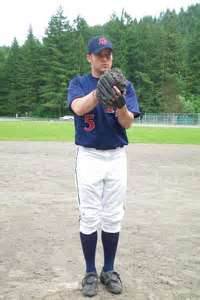Baseball Pitchers - 3 Basic Skills
Developing Baseball Pitchers, notice I said developing not creating, must be viewed as a long term investment in the player’s future. I’ve witnessed far too many young pitching Aces who were unable to pitch by the time they reached high school, whether by pitching too much or throwing pitches the arm was not developed enough to physically handle.
Coaching methods concerning the subject of Pitching Basics and how to pitch are quite varied, with everyone seemingly having their own interpretations or little tricks to use in order to gain the advantage over their opponent.
Let’s make one thing crystal clear … We are teaching young players the strenuous task of pitching. Some Highlights include:
(1.) We will learn Correct Mechanics …
(2.) We will learn Basic and Advanced Drills and Techniques …
(3.) We will learn Proper Grips and Finger Pressures … and Most of all ….
We’ll learn it Safely in order to preserve the integrity of the young athlete’s arm while providing maximum performance.
It’s not unusual to see an anxious pitcher or coach, who will charge forward trying to learn as much as possible as quick as possible, which is fine, except in their rush they fail to master the basics of pitching which will haunt them well into the future, not just this season.
Initially Pitchers should possess natural physical abilities which are required to pitch, but be aware physical elements can be changed, strengthened and modified, especially in a younger player. There is a whole lot more involved than shear arm strength and we’ll investigate a huge amount of information as we continue.

Good Balance - Baseball Pitchers
One must learn patience while learning the art of pitching .… let’s begin that process now by learning Three (3) Basic Rules of Pitching.
Rule One: Strategy & Baseball Pitchers
Remember playing the Rock, Scissors, Paper game when you were a kid? Ironically, this child’s game exemplifies simple strategy, the type of strategy which, as a pitcher, must become automatic, assessing all the variables in the matter of a few seconds.
It’s imperative, and your catcher will be wholly involved in this procedure, that you know if the particular batter has a known weakness you can exploit as a pitcher.
(1.) Is he a free swinger, which makes him vulnerable to the curve ball…
(2.) Does he have trouble getting around on a good fastball, which makes him vulnerable to a fastball inside on the hands …
Most of the time in youth baseball you probably won’t have a clear picture of a hitter’s weaknesses, therefore in short … You must outguess him, which is my way of saying you’re strategy is better than his.
Depending on the age and skill level of players, many batters will anticipate what type of pitch you will throw next, but others concentrate more on location of the pitch.
However, most hitters are taught to expect the fastball and adjust for the curve ball, all little pieces of information you must put together and develop into a pitching strategy.
Remember Rule One: “Fooling the Hitter” which is a Constant we strive to achieve.

Baseball Pitchers - Hiding The Ball
Rule Two: Pitching Mechanics
It may come as a surprise, but strategy is directly affected by your ability, and it’s imperative, to maintain identical Baseball Pitching Mechanics at all times. ( Let’s forget, for the time being, adjusting mechanics with runners on base, as that‘s an entire subject on its own and that’s not what we’re talking about now.
Repetitive Pitching Mechanics are essential for developing pin point control, maintaining velocity and establishing an origination point for all pitches, which dictate how they’ll react as they approach the plate.
A good hitter knows repetitive mechanics is a basic goal of a pitcher and if the hitter has been doing his homework, and you must assume he has, he has been watching your every move to see if he can determine a hitch or other tell tale sign in your mechanics, which may tip off the pitch you’re about to throw.

Baseball Pitchers- Always Same Arm Speed
You must always keep in mind, any noticeable difference in your windup, such as a higher leg kick, a different release point, such as dropping down into a side arm motion, will alert the hitter something’s different, which takes away the element of surprise and usually tilts the odds in favor of the hitter.
Remember Rule Two: Pitching Mechanics must be the same no matter what pitch is thrown.
Rule Three: Arm Speed
In pitching Arm speed, except for deception purposes, has nothing to do with the speed or break of a baseball … except in a Negative Way. I’ll say that again in a different way.
Changing your arm speed while pitching will only result in something bad.
Ever see a major league pitcher throw a fastball pitch 58' bouncing in front of the plate, and the announcer will remark "He tried to over throw the ball." That means, even at the major league level adrenalin takes over, and he tried to increase the ball's speed by moving his arm faster, which only threw his entire mechanics off resulting in a bad pitch.
Remember, once you learn it doesn’t matter what type of pitch you are throwing, fastball, curveball, changeup, slider or any other, Arm speed has nothing to do with the motion and movement of a pitch, so it not only should, but must remain a constant.
Ever see a little league 8 year old hurler slow his arm speed as he attempts to throw a change up? Pretty obvious what’s coming… it’s not a fastball. Again, a major change in delivery, which alerts the batter.
Remember Rule Three: Arm speed must remain the same.
Why begin with these 3 basic skills?
Because you must begin somewhere and these three skills will Never change no matter the level of baseball.
Master these three mandatory basics and you will have the beginnings of a solid foundation on which to build your pitching skills.
1. Attempt to fool the hitter by changing speeds and location.
2. Baseball Pitching Mechanics must never change while delivering different pitches.
3. Arm Speed must remain constant, never changing.
Baseball Pitchers Back To Learn To Pitch

New! Comments
Have your say about what you just read! Leave me a comment in the box below.